Hadrian’s Wall

Hadrian’s Wall was a 70-mile-long, 10-20-feet-wide, 15-feet-tall wall that was meant to establish a defendable border between southern England and the unconquered north. Much of the wall was constructed with stone and would have seemed out of this world to the local citizenry because this area was not familiar with stone masonry at this point in history.
By the 5th century, the Roman Empire had fallen, and Britain fell into the dark ages. Much of the stone was quarried to build many of England’s medieval castles. To this day, only 10% of the original wall still stands due to centuries of the stone being removed, buried, or destroyed.
Old Saint Paul’s Cathedral

The original Saint Paul’s Cathedral was built on a site where a Roman temple to the Goddess Diana once stood and was dedicated around 604 AD, during the rule of King Aethelberht I. Two more cathedrals bearing the same name were built on the site and then also subsequently burned down. The fourth cathedral, we now know as Old St. Paul’s was constructed of Caen stone beginning in the late 11th century.
Over the years, the edifice fell into disrepair, the nave was used as a marketplace, and the spire was destroyed by lightning and fire in 1561. During the English Civil Wars between 1642-1651, the structure was severely damaged. And then the cathedral was destroyed by the Great Fire of London before reparations could begin in 1666. The Saint Paul’s we know, and love today was then redesigned and rebuilt between 1675 to 1710.
Temple of Artemis at Ephesus a.k.a. Temple of Diana

The Temple of Artemis is believed to have been built around 550 BC and was dedicated to an ancient local form of the goddess Artemis who was associated with the Roman Goddess Diana. Built by Croesus, king of Lydia and located in then Ephesus (now Turkey), the temple was one of the original Seven Wonders of the Ancient World and took 120 years to complete.
The temple did need to be rebuilt a few times, once due to arson and once due to flooding, and once due to an attack by the Goths in 267. However, it was a Christian mob in 401 that definitively destroyed the temple. All that remains today are its foundations, and a single column made from composite temple remains.
Museum of Islamic Art – Cairo, Egypt
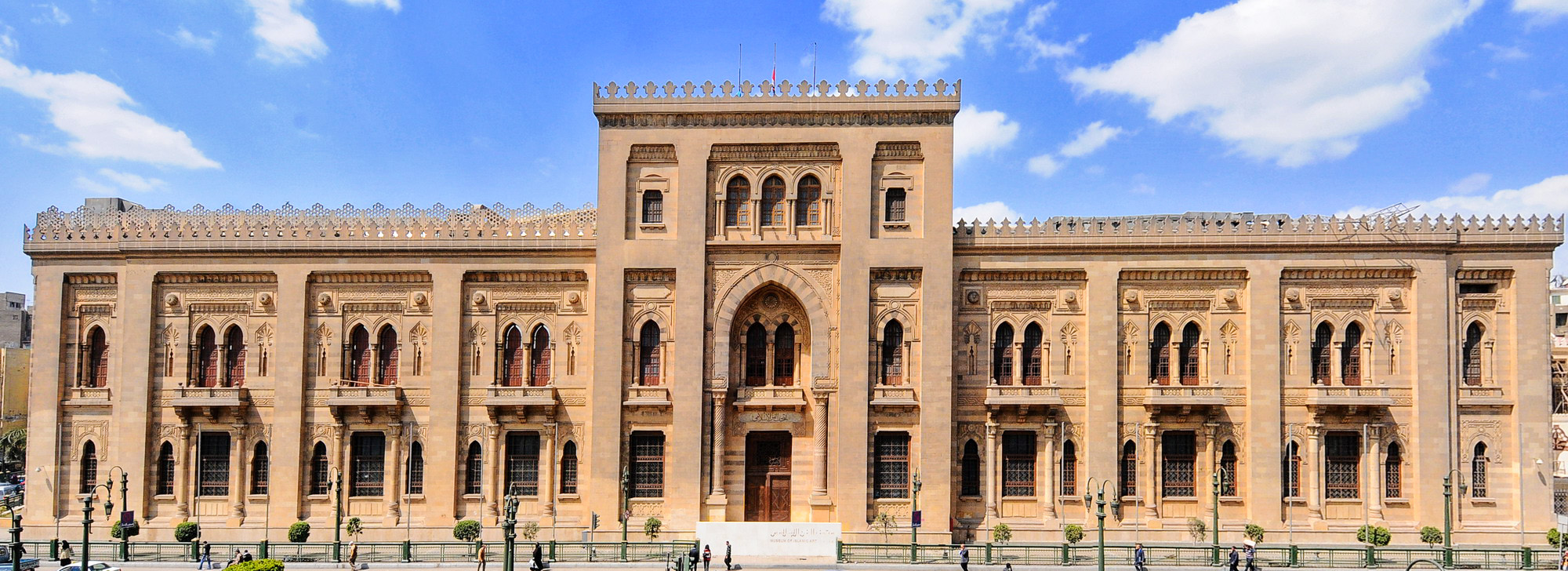
The Museum of Islamic Art in the heart of Historic Cairo is considered the be the largest Islamic Art museum in the world as it houses close to a Hundred Thousand antique Islamic artifacts of various artifacts from around the world. The collection is characterized by its breadth of coverage of all the branches of Islamic Art throughout the ages, which makes it a beacon of Islamic Art and Civilization for all times.
Founded in 1881 and formerly called the Museum of Arab Art, its collection spans from the 7th-century Umayyad dynasty to the 19th-century Ottoman Empire and more than 100,000 artifacts. In 2014, a car bomb meant for the police station across the street unfortunately also damaged the façade of the museum as well as 179 pieces of art inside. After 3 years of reconstruction and restoration, most of the affected art was salvaged and the museum reopened in 2017.
The White House

George Washington, himself, selected the site for the White House, which would begin construction in 1792 as a worldwide symbol of freedom and democracy as well as to be the official residence and workplace of the President of the United States. The first president to make the White House their home was President John Adams, eight years later.
The White House has been the subject of several unfortunate events, the worst occurring in 1812 when British soldiers set fire to it in 1814. However, the White House that we know and recognize today is due to the renovations begun in 1948 by President Harry S. Truman. The project lasted until 1952 and included everything but the outer walls being dismantled and reconstructed.
Christopher Columbus – United States of America
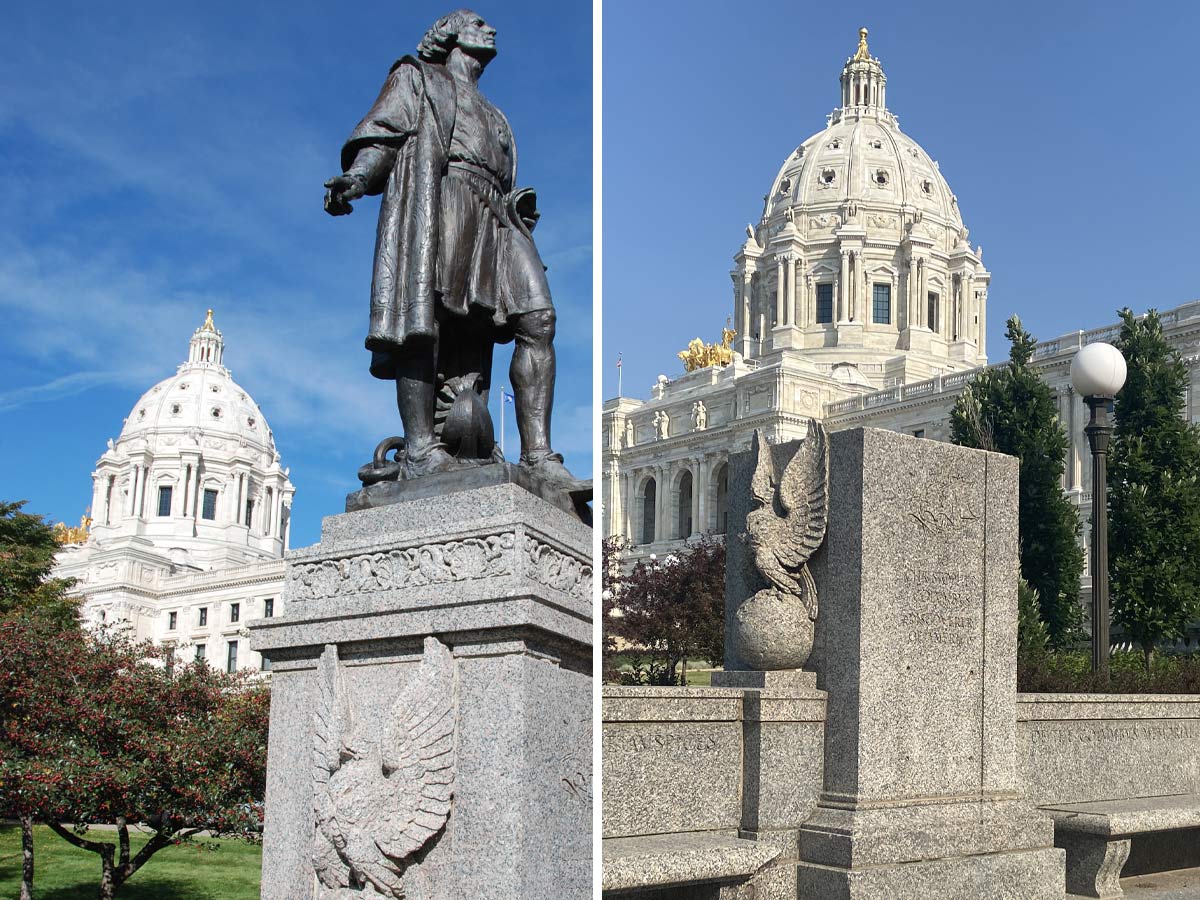
At the end of May 2020, the world watched while a man named George Floyd was killed during a police arrest via social media videos filmed by bystanders. The day after, protests began in Minneapolis, and by June 6, 2020 an estimated half of a million people joined protests in 550 locations across the country. By mid-June, protests against police brutality and racism were taking place not just in America, but across the globe.
During the protests across the country, many statues and monuments of historical figures thought to be racist in any way were pulled down by protestors. Statues of Christopher Columbus came down in several states including Virginia, Massachusetts, Minnesota, New Jersey, Texas, South Carolina, Michigan, Ohio, Missouri, California, Rhode Island, Colorado, and several others. This was due to the fact that Columbus not only enslaved, but perpetrated systematic violence against the indigenous peoples of the Caribbean.
Myotus, CC BY-SA 4.0, via Wikimedia Commons; Myotus, CC BY-SA 4.0, via Wikimedia Commons
King George III
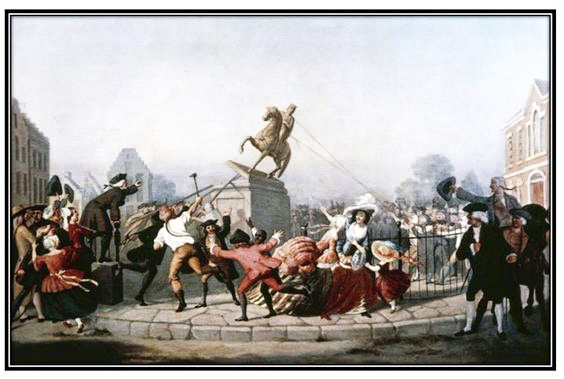
The statue of King George III was commissioned in 1766 by the General Assembly of the colony of New York. It was to “perpetuate to the latest Posterity, the deep Sense this Colony has of the eminent and singular Blessings received from him during his most auspicious Reign.” It was completed in 1770 and dedicated in 1770 at Bowling Green in New York City.
The statue only stood for six years until the Declaration of Independence was written and read out loud to colonists and soldiers alike. The present crowd became angry and determined to bring the statue down. The group used ropes to pull the leaden statue down and melted most of it into ammunition for the coming war—42,088 bullets to be exact!
Buddhas of Bamiyan, Afghanistan

The Buddhas of Bamiyan in Afghanistan were two monumental statues of Gautama Buddha carved into the side of a cliff in the Bamyan valley. The smaller statue—female Shemama—was built around 507 BC and stood approximately 125 feet. The larger statue was male Buddha Salsal, built in 554 BC and stood approximately 174 feet.
Experts do not know much about who built the statues or why, but they do know that the statues became a beacon to Buddhists and non-Buddhists alike. The statues stood for more than 1,500 years and were unfortunately destroyed by the Taliban in 2001.
Temple of Bel at Palmyra, Syria

The Temple of Bel at Palmyra (also known as the Temple of Baal) was an ancient temple dedicated to the Mesopotamian god Bel around 32 BC. It formed the center of religious life in Palmyra, Syria.
The ruins stood until 2015 and were considered one of the best-preserved sites until they were further destroyed by the Islamic State of Iraq and Syria.
Notre-Dame

Notre-Dame de Paris, or Notre Dame Cathedral is the most famous of the Gothic cathedrals of the Middle Ages and is distinguished for its size, antiquity, and architectural interest. Construction of the cathedral began in 1163 and the high altar was consecrated in 1189.
Though the cathedral has seen other destruction and repairs, it was a fire on April 15, 2019 that nearly destroyed the monument. The fire is believed to have been started by construction tools, but by the time it had been extinguished, the building’s historic spire had collapsed and most of its roof had been destroyed. The cathedral is under repairs as of now.
Saddam Hussein

Rather short lived, the statue of Saddam Hussein was erected in April of 2002 in honor of his 65th birthday. The 39-foot statue stood in the roundabout in the center of Firdos Square, in Baghdad where several other monuments have stood. The statue of Hussein replaced a monumental statue called “The Unknown Soldier” which had stood in that spot since 1959.
The statue of Hussein only stood until 2003, when American troops invaded Iraq, reached Baghdad, and began pulling down it down. The statue was replaced one month later with a 23-foot green, abstract sculpture depicting an Iraqi family holding a crescent moon and sun.
The Lighthouse of Alexandria

Also called the Pharos of Alexandria, the lighthouse was one of the Seven Wonders of the Ancient World. Although it isn’t certain which Ptolemy it was built in honor of, the construction wrapped up during the reign of Ptolemy II in 280 BC. The lighthouse stood on the island of Pharos in the harbor of Alexandria, more than 350 feet high, making it the second highest manmade structure of its time.
Several earthquakes between 796 AD and 950 AD damaged the lighthouse, one even causing a partial collapse of the structure, however, there are extensive records of repairs and extensions. There is no record of what finally destroyed the lighthouse, but it is widely assumed that it was ultimately due to more earthquakes.
The World Trade Center
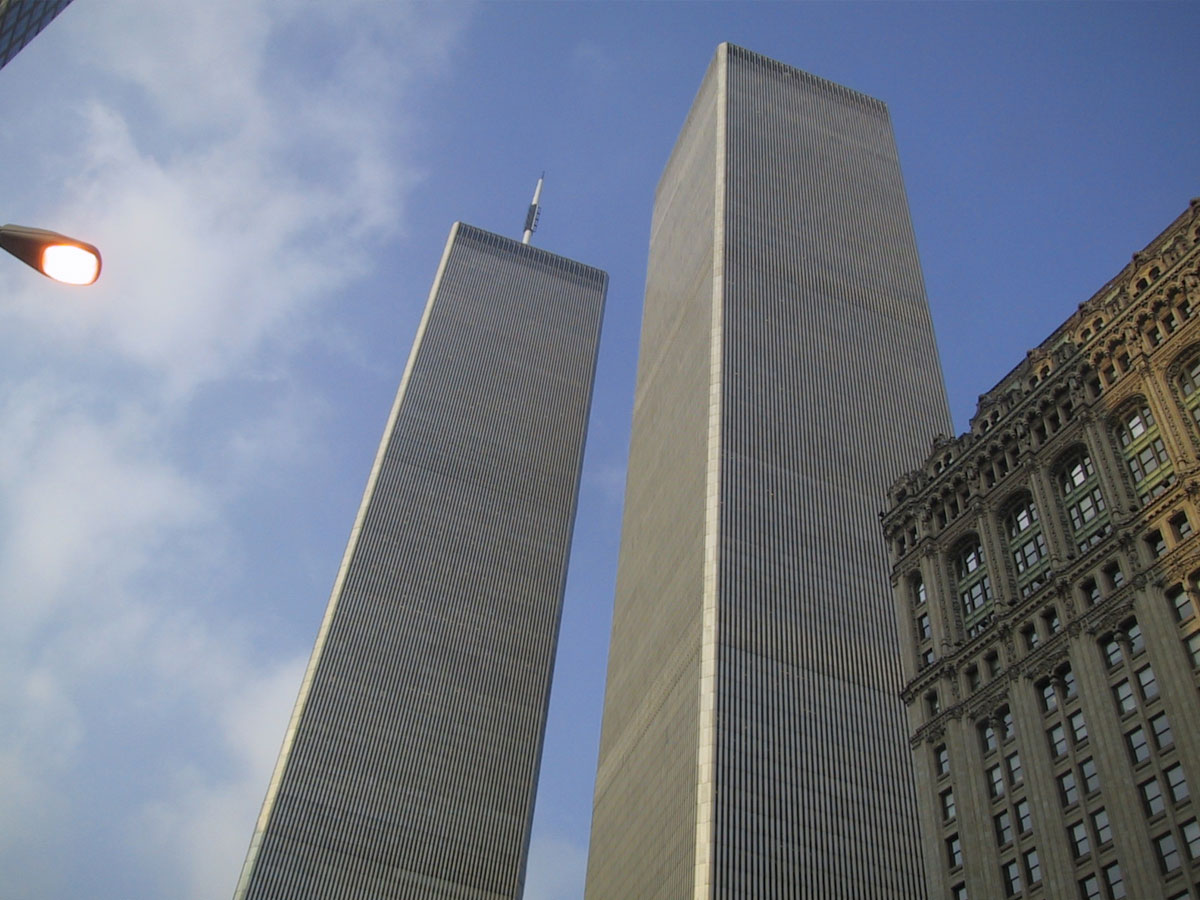
Opening on April 4, 1973, the twin towers stood at 110 stories each, accommodating 50,000 workers and 200,000 daily visitors, and were meant to replace the Empire State Building as the world’s tallest building. They were a modern marvel for their time: the towers were built using more than 200,000 pieces of steel, 3,000 miles of electrical wiring, 425,000 cubic yards of concrete, 40,000 doors, 43,600 windows, and six acres of marble.
What took six years and more than 10,000 workers to build all came down in just hours when the World Trade Center was attacked by terrorists with large commercial airplanes on September 11, 2001. The attack resulted in the loss of more than 3,000 lives, destroyed several buildings, and permanently altered New York City’s skyline.
Pennsylvania Station
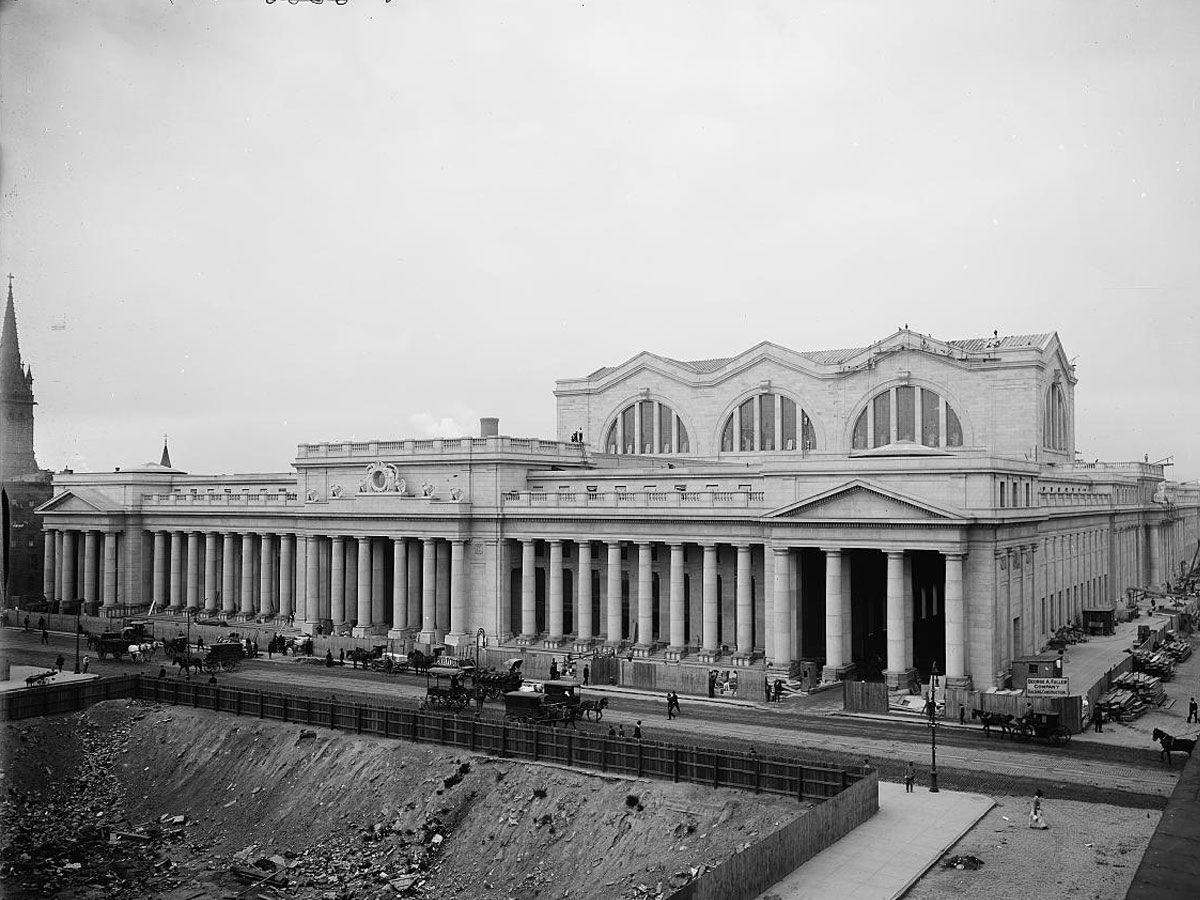
The original Pennsylvania state occupied an area of two who city blocks. It was considered an architectural beauty; the head house and the train shed were considered masterpieces of the great architectural works of New York City when it was finished in 1910. It was physically massive with nine acres of travertine and granite, 84 Doric columns, a vaulted concourse, and all of it was modeled after the royal Roman baths.
Unfortunately, the station lost revenue after WWII, and by the time it was demolished it was dilapidated due to poor maintenance. Once the demolition took place, however, it caused a large outcry in the city and now, the demolition of Penn Station is credited with the birth of the current historic landmark preservation movements. The site of Penn Station is now the site of Madison Square Garden above ground, with the newly renovated Pennsylvania Station underneath.
Royal Opera House – Valletta (Malta)

The Royal Opera House in Valletta, Malta was originally built in 1866 and was considered a modern marvel with seating capacity for more than 1,000 and enough room for an additional 200 standing spectators. Seven years after it was completed, the interior was destroyed by a fire and the decision was made to rebuild. It was completed again in 1877.
65 years after it was completed the second time, the Royal Opera House took direct fire from a Luftwaffe bomber that destroyed the portico and the auditorium to heap of stones. In 2008, government announced a proposal to redevelop the site into an open-air theatre that is now known as the Pjazza Teatru Rjal, after the original structure.
The Berlin Wall
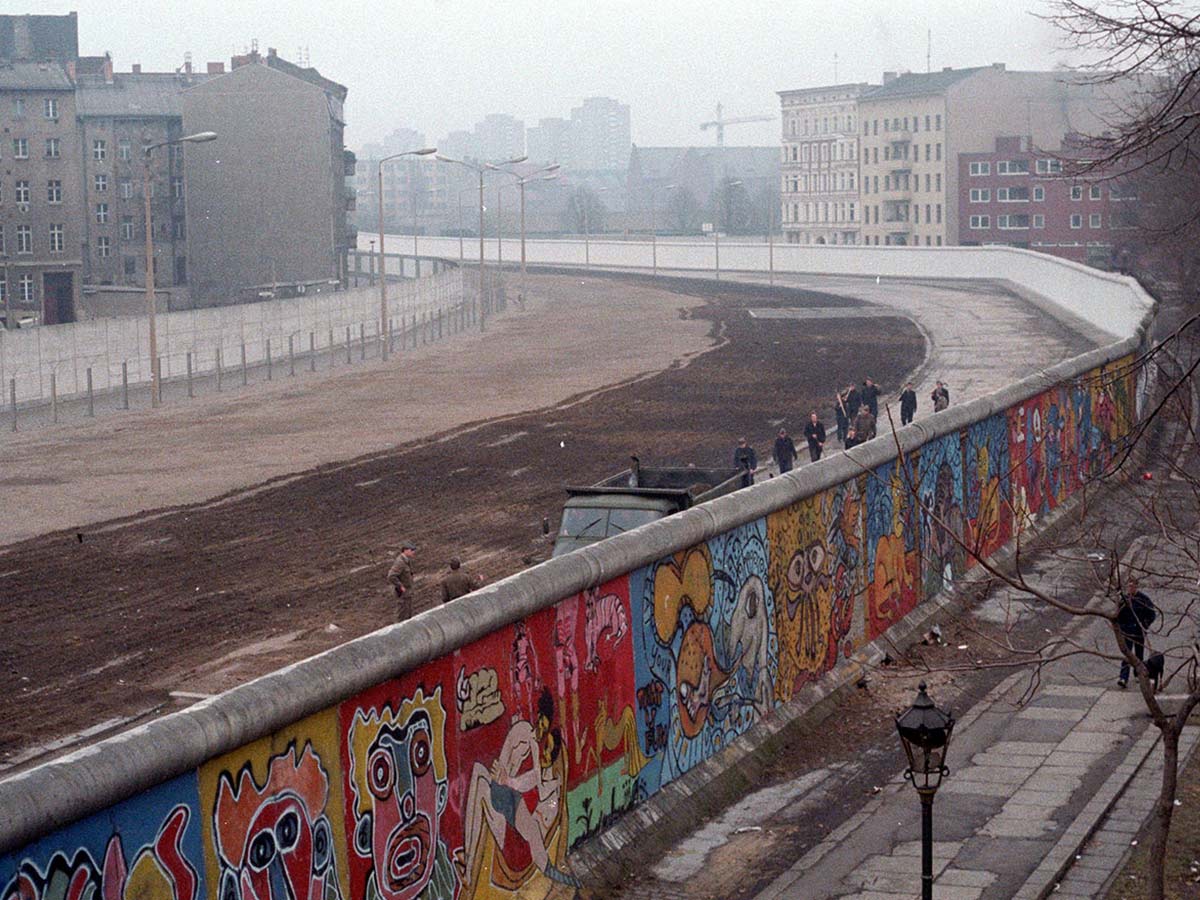
The Berlin Wall was a concrete barrier that physically and ideologically divided Berlin from 1961 to 1989. Constructed by the German Democratic Republic (East Germany), it encircled West Berlin, preventing East Germans from fleeing to the West. The Wall became a powerful symbol of the Cold War, representing the division between the communist and capitalist blocs.
The Berlin Wall was heavily damaged and eventually dismantled in the wake of political changes in 1989. Citizens from both sides chipped away at it, resulting in the Wall’s eventual collapse. Today, only fragments remain, preserved as historical monuments and memorials to symbolize the reunification of Germany and the end of the Cold War.
Colossi of Memnon
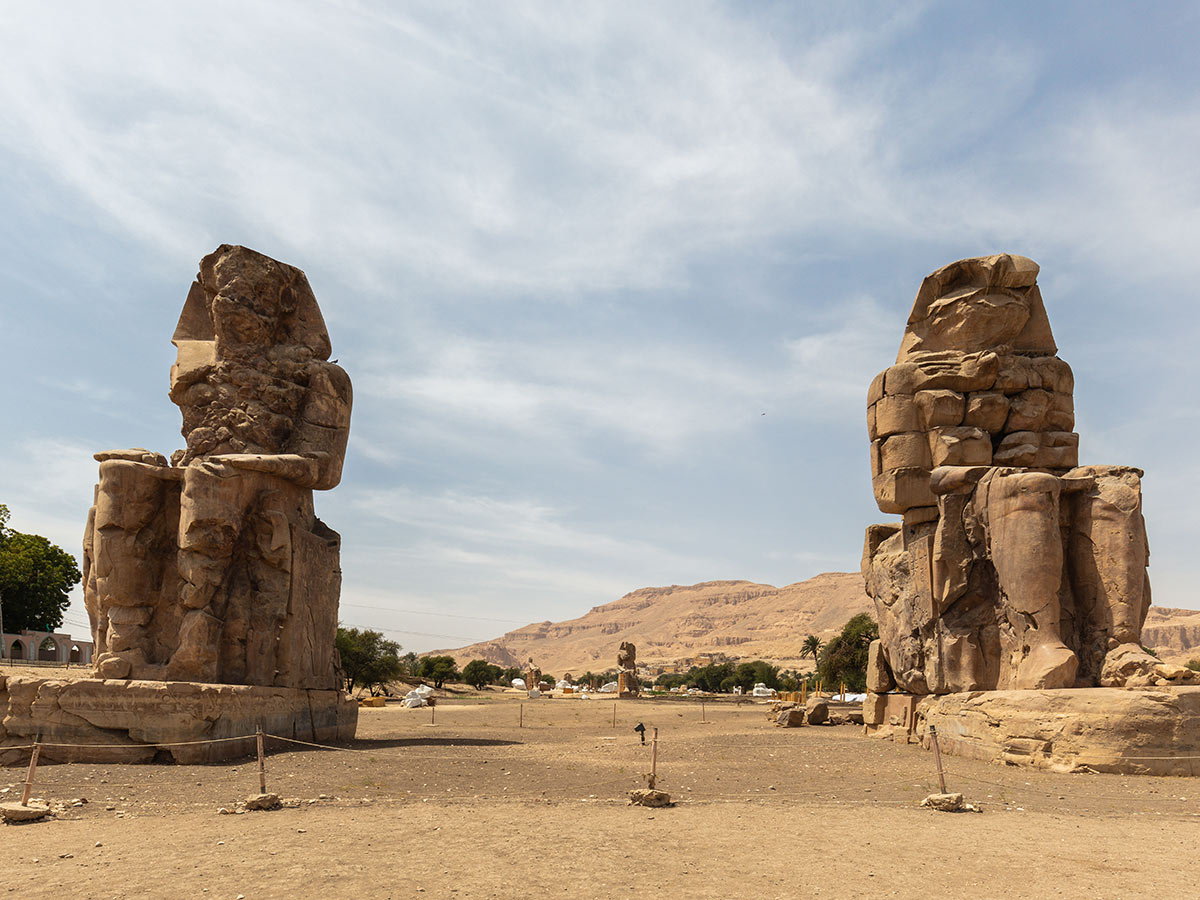
The Colossi of Memnon are two massive stone statues located on the west bank of the Nile River, near Luxor in Egypt. These statues, each about 18 meters high, depict the Pharaoh Amenhotep III and were originally part of his mortuary temple.
Over the centuries, the Colossi of Memnon have suffered significant damage due to natural disasters, including earthquakes. The most notable event occurred in 27 BC when an earthquake caused the northern statue to crack, producing a "singing" sound at dawn. Additionally, erosion from wind and water has contributed to their weathered and ruined appearance today.
The Great Buddha of Kamakura
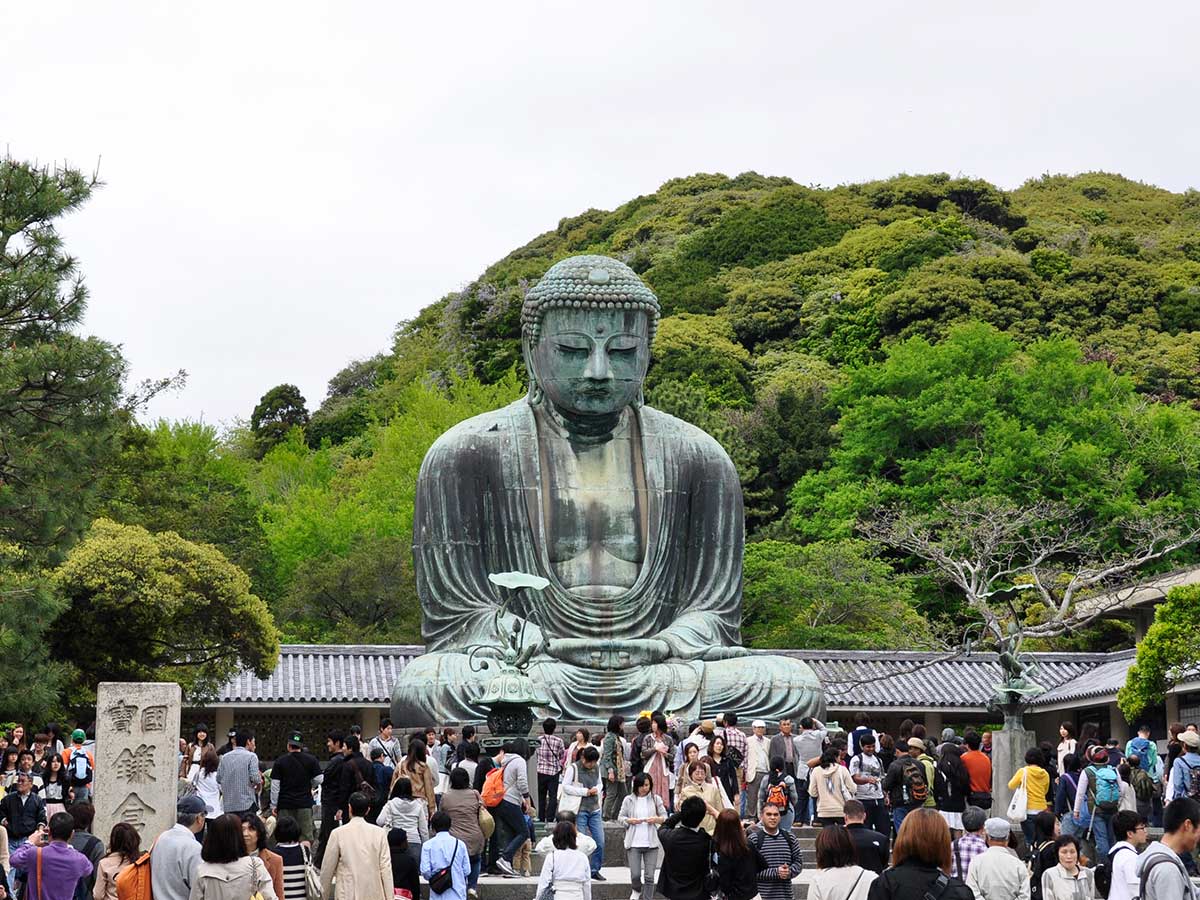
The Great Buddha of Kamakura is a monumental outdoor bronze statue of Amitabha Buddha located in Kamakura, Japan. Standing at approximately 43.8 feet tall, it was originally constructed in 1252 and housed within a temple. The statue significantly represents Japanese Buddhist art and is an important cultural landmark.
Over the centuries, the Great Buddha of Kamakura has faced numerous challenges. Natural disasters, including earthquakes and tsunamis, have caused extensive damage. The original temple housing the statue was destroyed in a 15th-century tsunami, exposing the Buddha to the elements. Despite these adversities, the statue has been preserved and remains a revered site.
The Parthenon
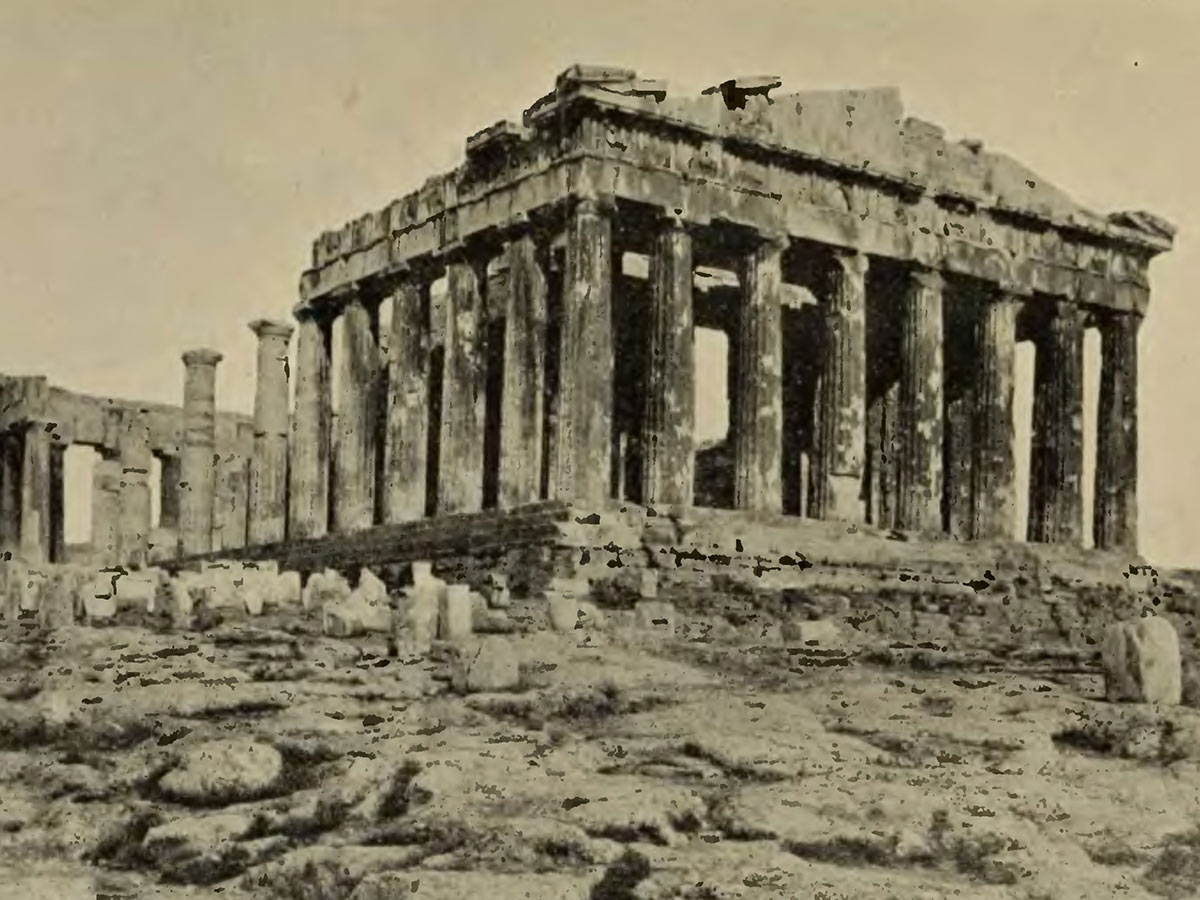
The Parthenon is a former temple on the Athenian Acropolis in Greece, dedicated to the goddess Athena. Constructed between 447 and 432 BC, it is a symbol of ancient Greek architecture and cultural achievement, showcasing the Doric order with intricate sculptures and friezes.
Throughout history, the Parthenon has endured significant damage. In the 5th century, it was converted into a Christian church, then a mosque in the 15th century. The most devastating event occurred in 1687 when an explosion, caused by Venetian bombardment, severely damaged the structure. Additionally, looting, earthquakes, and pollution have contributed to its deterioration.
The Great Sphinx of Giza
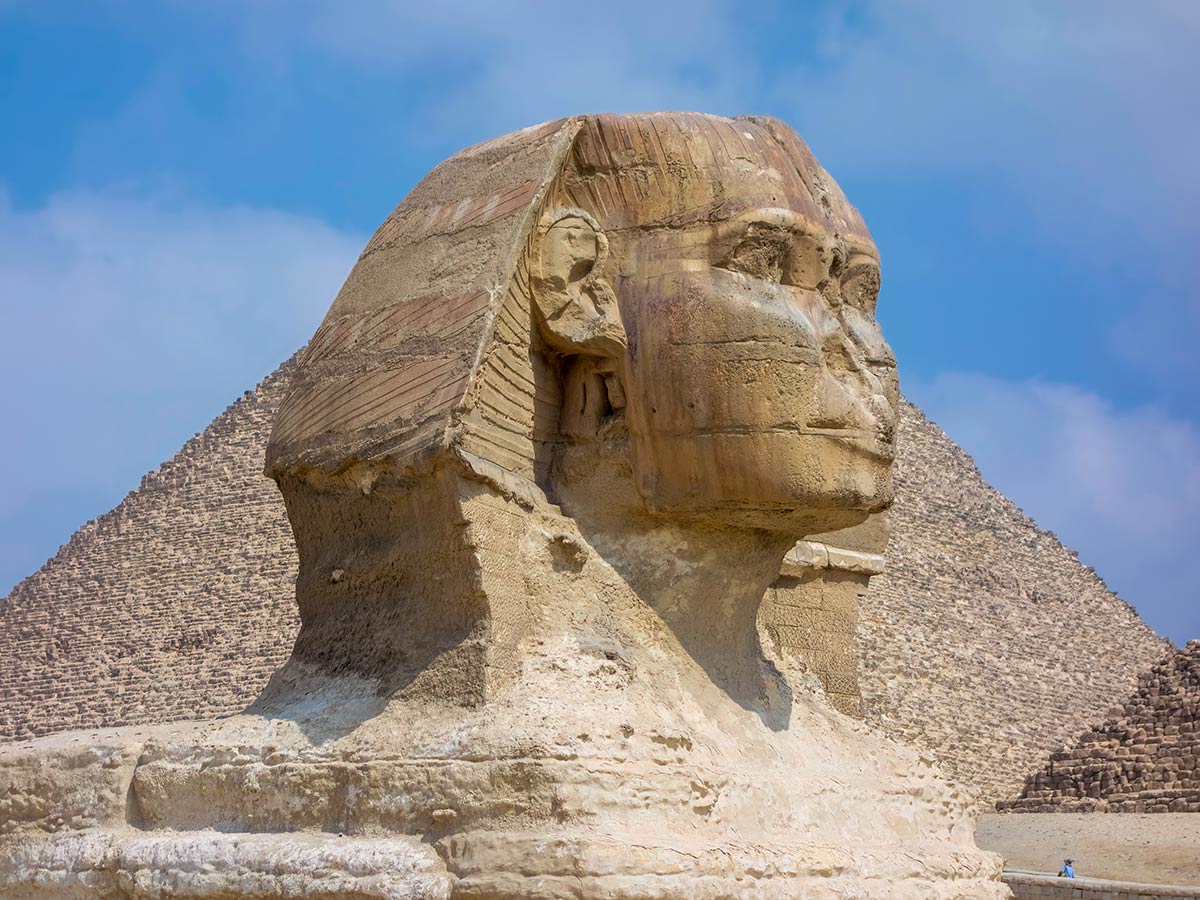
The Great Sphinx of Giza is a colossal limestone statue located on the Giza Plateau near Cairo, Egypt. With the body of a lion and the head of a pharaoh, it is believed to represent Pharaoh Khafre and was constructed around 2500 BC. The Sphinx is one of the most iconic symbols of ancient Egypt and is known for its enigmatic expression and massive size.
Throughout history, the Great Sphinx has suffered significant damage due to natural erosion, human activity, and deliberate defacement. Notably, its nose was broken off, possibly by iconoclasts in the 14th century. Additionally, wind, sand, and pollution have contributed to the weathering and gradual deterioration of the monument over millennia. Efforts have been made to preserve and restore this ancient wonder.
 Author
Chrissy Jones
Last Updated: December 15, 2025
Author
Chrissy Jones
Last Updated: December 15, 2025